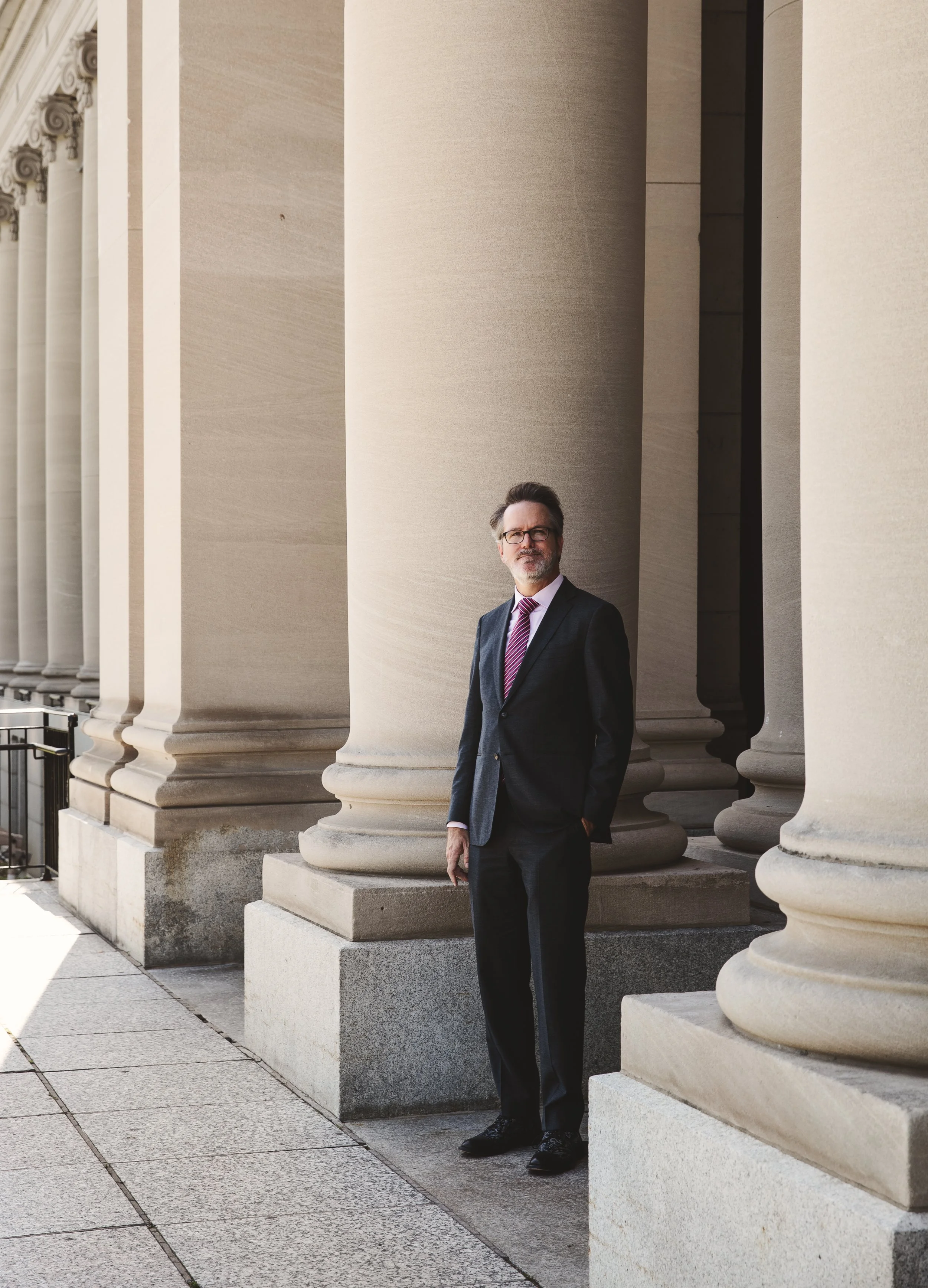Shining the Light on St. Louis
Under Jody Sowell, the city is the polestar of the century-old Missouri Historical Society
By Grayling Holmes Photography by Carmen Troesser
With a masters in journalism and a PhD in American studies, Jody Sowell knows how to find, write, and narrate a great story.
In his second year as the chief executive officer of the Missouri Historical Society but in his 18th with the institution, he also knows how to draw crowds. Big crowds.
Jody Sowell, President and CEO Missouri Historical Society
Jody Sowell’s a master of exhibits. His first as a full-time MHS employee was “Our Olympics,” detailing the first Olympics held in the United States—and in St. Louis—in the summer of 1904. After being named director of exhibitions and research in 2013, he and his staff created such award-winners as “250 in 250,” an exhibit commemorating the 250th anniversary of the founding of St. Louis that included the stories of 50 people, 50 places, 50 objects, 50 images and 50 memorable moments; “#1 in Civil Rights: The African American Freedom Struggle in St. Louis”; “The Louisiana Purchase”; and “A Walk in 1875 St. Louis.”
Before the pandemic, the museum welcomed more than 400,000 visitors annually. Then 2020 swooped in and Sowell had to make some quick pivots. He oversaw “Uplifting STL,” a social media series featuring inspirational stories from the city’s past, and created a video “St. Louis Strong.” The following year, he debuted as the host of STL History Minutes, which is aired weekly during CBS’ “Sunday Morning.” The museum also implemented a series of walking tours dubbed See STL (followed by either the name of the neighborhood or the subject, i.e. Urban Renewal, Gay Liberation in the Gateway, Downton Origins, Beyond the Ballot, Vietnam in St. Louis.)
Fast forward to 2023 and the current “Color St. Louis” exhibit, an interactive display where visitors can color on a St. Louis skyline illustration on dry-erase wallpaper covering the gallery walls. During peak hours, the lines snake out the door and the patrons are lined up in neat stanchions.
“I’m heartened to see the lines again and to hear the cacophony of chatter, watch the delight of visitors, and feel the electric buzz as patrons flit from room to room to soak it all in,” Jody says.
The CEO’s focus is myopic and zeroed in on St. Louis. He says the historical society has reverted back to its earliest days in 1866, when the founders started it to save St. Louis’ history from being lost. At that time, the terms Missouri Historical Society and St. Louis Historical Society were used interchangeably. In 1913, when the Missouri History Museum was built on the site of the entrance to the 1904 Word’s Fair, “There are those who say that it should have been more aptly named the St. Louis History Museum because of our city’s explosion in population and it’s prominence on the world map.”
Sowell says that interest hasn’t waned. “When local and out-of-town visitors come to our steps, they want to hear about St. Louis and its pivotal role in this country’s history.
“Our city is steeped in the history of America’s founders and has always inspired greatness,” he adds. “What other city can boast that it has played a pivotal role in shaping the soundtrack of America? Scott Joplin, Josephine Baker, Henry Townsend, Tina Turner, Fontella Bass, Miles Davis, and even today’s Nelly? Not many cities can claim people who launched their careers or changed them because of a city. That’s really what we are trying to do in all our work at the museum is to share a past of this place that people can take inspiration from.”
Sowell has announced plans to open three new signature galleries: A brand new 1904 World’s Fair exhibit, a new artifact showcase gallery, and in 2027, a decade-by-decade walkthrough of St. Louis history. That collection, which will be located on the second floor, will detail what St. Louisans were eating, wearing, discussing for each of the time periods.
Other plans include exhibiting more of the Historical Society’s treasures, digitizing more for online consumption, and opening a showcase gallery called “Collected,” starring one single object and exemplifying a significant piece of St. Louis history.
One specific area Sowell is focusing on is St. Louis’ Black population. A story he likes to tell regards an early civil rights activist, Charlton Tandy.
“He was a preacher, accomplished equestrian, as well as a problem solver,” Sowell says. “During segregation, blacks were forbidden to ride inside horse-driven street cars. Instead, they had stand on narrow exterior platforms holding onto subway-like straps. A pregnant woman was killed by falling off the trolly car and St. Louis was forced to change the law. As you know, one can change a law, but it is another thing to enforce it.”
White street car drivers habitually drove past blacks congregated at stops, Sowell explains. One day Carlton Tandy parked his horse in the middle of the street and blocked the oncoming streetcar. The driver was forced to stop and stubbornly exited the streetcar, effectively stranding his passengers.
“Tandy came to the rescue by tethering his horse and taking the reins of the streetcar horse,” Sowell says. “Then he completed the route by picking up waiting black passengers at every stop. Instead of hanging on by straps on dangerous streetcar ledges, they now sat inside the car. Again, St. Louis innovation. The problem necessitates the solution. Even in our darkest and most difficult moments, there are St. Louisans who are trying to make this world a better place. We should imitate the model.”
Jody Sowell has a million stories like that one, all about his adopted city.
“My career has come full circle. My wife Shannon and I came to St. Louis and fell in love,” he says. “We get to stay because that love affair continues. Our hope is that through my work, we can spread that feeling to every visitor who walks through the museum doors by showing them that the past is present and that St. Louis continues to build a gateway to the future. One might say that St. Louis remains a light on the hill, just as it was when it stole the world spotlight at the World’s Fair.”



